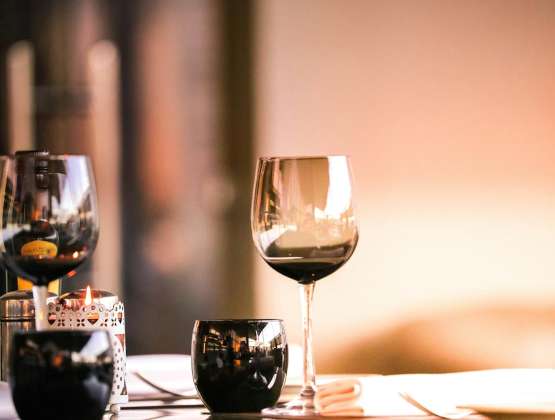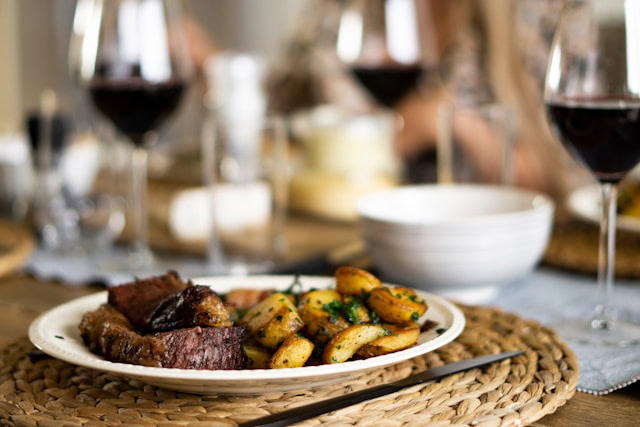Rioja wine hails from one of Spain’s most celebrated wine regions. It has captured the hearts of wine lovers around the world for generations for several standout reasons. Whether a wine connoisseur or beginner, Rioja has something to offer and something to say. So, let’s explore what makes this wine so special, from its roots in the Spanish countryside to the flavors that dance in your glass.
The Rioja Region: A Wine Lover’s Paradise
First, let’s set the scene. Rioja is a wine region located in northern Spain, just south of the Cantabrian Mountains. Picture rolling hills, ancient vineyards, and small, picturesque villages—it’s the kind of place you’d want to get lost in. The region is named after the Río Oja, a small river that flows through the area. It’s divided into three subregions: Rioja Alta, Rioja Alavesa, and Rioja Oriental (formerly Baja), each with its unique climate and characteristics.
What makes Rioja so special for winemaking is its geography. The region sits at the crossroads of Atlantic, Mediterranean, and continental climates. This creates a perfect balance of warmth, rainfall, and cooling breezes. This mix helps grapes ripen slowly and develop complex flavors. The soil also plays a big role. Rioja’s vineyards are planted in a mix of clay, limestone, and alluvial soils, giving the wines their unique structure and minerality.
From Ancient Rome to Modern Icon
Wine has been made in Rioja for over 2,000 years. The Romans were among the first to plant vineyards here, and the tradition only grew. By the Middle Ages, Rioja wines were already well-known across Spain, thanks to the pilgrims traveling the Camino de Santiago, which cuts right through the region.
But the real turning point came in the 19th century, when French winemakers went to Rioja looking for new opportunities. This came after being devastated by the phylloxera plague that destroyed their vineyards. They brought with them the techniques of barrel aging and blending, transforming Rioja into a powerhouse of modern winemaking.
In 1925, Rioja became Spain’s first wine region to receive official Denominación de Origen (DO) status, a designation that protects the quality and origin of the wine. Later, in 1991, it was elevated to DOCa (Denominación de Origen Calificada), the highest classification for Spanish wines.

What Makes Rioja Wine Stand Out?
Rioja isn’t just another red wine—it’s a wine with personality. One of the standout features of Rioja is its focus on aging and classification. Unlike many other regions, Rioja winemakers age their wines for you, so by the time you get your hands on a bottle, it’s already beautifully developed.
Here’s a quick breakdown of the aging classifications:
- Joven: Fresh and fruity, usually aged less than a year. These are your easy-drinking, everyday wines.
- Crianza: A step up, with at least one year in oak and another in the bottle. Crianza wines have more structure and subtle oak flavors.
- Reserva: Aged for at least three years, including one in oak. These wines strike a perfect balance between fruit and aging, with elegant complexity.
- Gran Reserva: The pinnacle of Rioja wines, aged for at least five years (two in oak, three in the bottle). Gran Reservas are rich, nuanced, and made for special occasions.
Another thing that sets Rioja apart is its use of Tempranillo, Spain’s signature red grape. Tempranillo is the backbone of Rioja wines, known for its versatility and ability to take on the flavors of its surroundings—whether it’s the oak barrels it ages in or the mineral-rich soils it grows in.
Styles and Flavor Profiles
While red Rioja (or tinto) gets most of the attention, the region also produces fantastic white (blanco) and rosé (rosado) wines. Each style has its own charm:
- Red Rioja: Tempranillo dominates, often blended with Garnacha, Graciano, or Mazuelo. Expect flavors of ripe red berries, plum, and cherry, with hints of vanilla, tobacco, and spice from oak aging. As the wines age, they develop earthy, leathery, and dried fruit notes.
- White Rioja: Made from Viura (also called Macabeo), sometimes blended with Malvasía or Garnacha Blanca. Younger whites are fresh and citrusy, while aged versions take on nutty, honeyed, and toasty qualities.
- Rosé Rioja: Light, crisp, and perfect for summer sipping, with flavors of red berries, citrus, and melon.
Overall, Rioja wines are known for their balanced acidity, smooth tannins, and ability to age gracefully.

Rioja Food and Wine Pairing
Pairing Rioja with food is a joy because it’s so versatile. The wine’s acidity and structure make it a great match for a wide range of dishes. Here are some ideas to get you started:
- Red Rioja: Think roasted meats, lamb chops, grilled vegetables, or Spanish classics like chorizo and paella. Younger reds pair well with burgers or pizza, while older Gran Reservas shine with richer dishes like braised short ribs or duck.
- White Rioja: Perfect with seafood, grilled chicken, or creamy pasta dishes. A barrel-aged white can even hold its own against hearty stews or roasted pork.
- Rosé Rioja: Ideal for salads, charcuterie boards, or light tapas like olives and manchego cheese.
And if you’re like me and have a sweet tooth, try pairing an aged Rioja with dark chocolate or a slice of almond cake. It’s a match made in heaven, trust me.
Why Rioja Deserves a Spot in Your Wine Rack
So, why should you reach for a bottle of Rioja? For starters, it offers incredible value for the quality you’re getting. Even a Gran Reserva, with years of aging and craftsmanship, is often more affordable than wines from other top-tier regions.
But beyond the price tag, Rioja is a wine that tells a story. It’s a celebration of tradition, innovation, and the land it comes from. Whether you’re sipping a crisp white on a summer evening or savoring a bold Reserva on a chilly night, Rioja has a way of making the moment feel special.
Closing Thoughts
At the end of the day, Rioja wine is about connection—connection to the land, to history, and to the people who pour their hearts into every bottle. It’s a wine that’s both approachable and sophisticated, making it perfect for any occasion.
So next time you’re at the wine shop, grab a bottle of Rioja. Pour yourself a glass, take a sip, and let it transport you to the sun-soaked vineyards of Spain. I promise, it won’t disappoint. Cheers!





